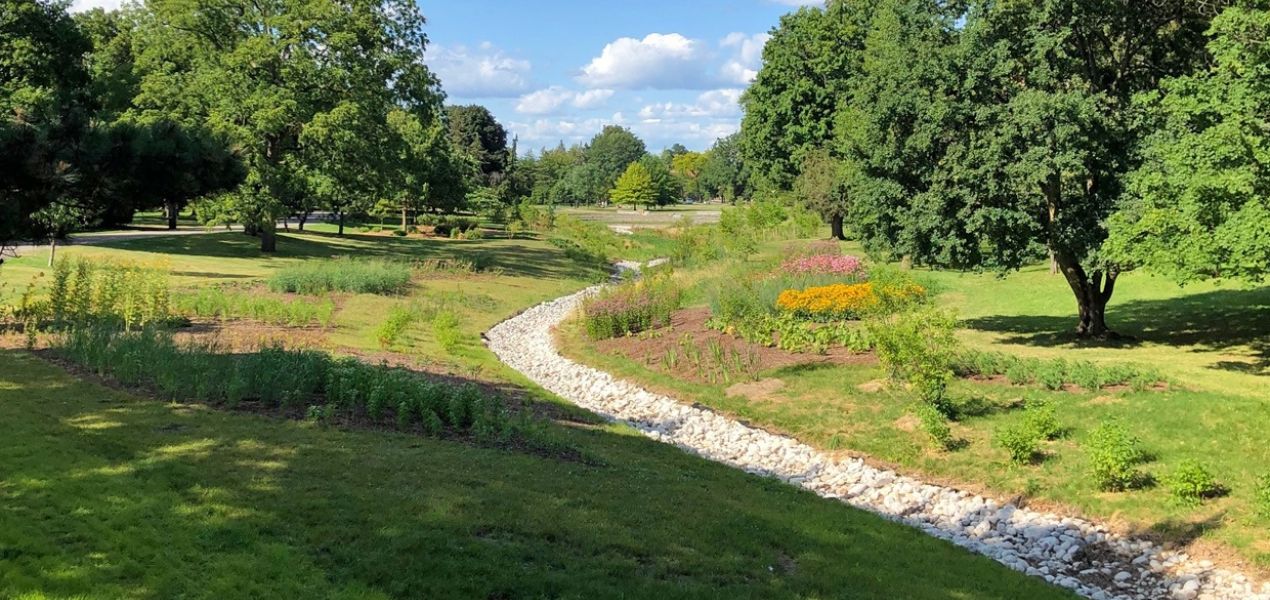
New Gage Park Stormwater Management
Image: Gage Park Stormwater ManagementA new stormwater management facility has been recently implemented at Gage Park in Hamilton.
Often referred to as one of Hamilton’s park network crown jewels, Gage Park offers 28.8 hectares (71 acres) of open green space in the heart of the city. As one of Hamilton’s most popular public spaces, the park began to deteriorate over time through heavy use and the increasing demands of a growing population and changing environment. To address this, the City commissioned landscape architecture, architecture, and urban design firm DTAH to develop a new Master Plan which was completed in 2010. The plan is designed for long term management and rehabilitation of the historic park, balancing the past vision and use with current urban pressures and community needs. A significant conservation challenge was the need to design new innovative stormwater management that protected the adjacent neighbourhood while respecting the historical park legacy.
Building on this Master Plan, DTAH worked with Wood PLC to develop stormwater management relief on the east side of Gage Park. The Rothsay community on the east side of Gage Park had been struggling with basement flooding. The old original infrastructure was designed to be a ‘combined sewer system’ where all waste water from the houses, such as toilets, sink and bathtubs, was mixed with the rain and snowfall that fell on the streets. This created a large volume of water that was directed to one system. The new stormwater management facility involves diversion sewers that separate the two systems and brings stormwater from Rothsay Avenue and Kensington Avenue South into Gage Park in the stream location identified in the 1920 Dunnington-Grubb master plan. This temporary storage swale reduces flooding by allowing a significant amount of the stormwater to be brought into the swale in Gage Park, while native plant material and sediment filtering stone help to absorb the stormwater.